
In today’s digital landscape, the need for robust information security has never been more paramount. With the rise of cyber threats, businesses and individuals alike must proactively safeguard their digital assets and sensitive data. This article provides a comprehensive guide to enhancing your information security and mitigating the risks associated with data breaches and cyber attacks.
From implementing strong password practices to leveraging password managers and embracing two-factor authentication, we’ll equip you with the essential tools and strategies to fortify your network security and risk management efforts. Additionally, we’ll explore the importance of aligning with security standards like ISO 27001, as well as the critical role of user awareness training and incident response planning.
Key Takeaways
- Cybersecurity is a critical concern for businesses and individuals as data breaches and cyber threats continue to rise.
- Implementing strong password practices, leveraging password managers, and embracing two-factor authentication are essential for protecting sensitive information.
- Aligning with security standards like ISO 27001 can help organizations strengthen their access control, cryptography, and compliance measures.
- User awareness training and effective incident response planning are crucial for fortifying the human element of information security.
- A comprehensive approach to information security, encompassing both technological and human factors, is necessary to safeguard digital assets and prevent cyber attacks.
The Importance of Strong Password Security
Passwords are the first line of defense against cyber threats, yet many people still use weak and easily guessable credentials. In today’s digital landscape, where cyberattacks are becoming increasingly sophisticated, the importance of creating unique, complex passwords cannot be overstated. Strong password security is essential for safeguarding your personal and professional accounts from unauthorized access.
Become a Password Picasso: Create Unique and Complex Passwords
To become a “Password Picasso,” your passwords should be a blend of uppercase and lowercase letters, numbers, and symbols. Experts recommend using a minimum of 12 characters for optimal security. Avoid relying on personal information, such as birthdays or pet names, which can be easily guessed by cybercriminals. Instead, consider transforming a memorable phrase or sentence into a unique and complex password, like “L2m$XaJ!n8@z.”
Avoid Password Carbon Copies Across Accounts
The practice of reusing the same password across multiple accounts is a dangerous one, as a breach of one account can lead to a domino effect, compromising all your other logins. Cybercriminals often use techniques like brute-force attacks to crack weak passwords and gain access to your sensitive information. To mitigate this risk, it’s essential to create unique passwords for each of your accounts, even if they may be more challenging to remember.

“A strong password is the first line of defense against unauthorized access. Neglecting password security is akin to leaving your front door unlocked – it’s an open invitation for cybercriminals to wreak havoc.”
By becoming a “Password Picasso” and avoiding the temptation of password carbon copies, you can significantly enhance the security of your online accounts and protect yourself from the consequences of data breaches. Remember, strong password security is not just a good practice – it’s a crucial aspect of maintaining your digital safety in today’s technology-driven world.
Leverage Password Managers for Secure Storage
In today’s digital landscape, where we juggle numerous online accounts, the importance of robust password security cannot be overstated. Password managers emerge as a powerful solution, providing a secure way to store all your passwords in one place. These versatile tools not only eliminate the need to remember multiple complex passwords but also offer additional security features that can significantly enhance your online safety.
Benefit from Automatic Form-Filling and Phishing Protection
Password managers often come equipped with the ability to automatically fill in login forms, saving you time and reducing the risk of typos or manual entry errors. This feature is particularly useful when accessing sensitive accounts, as it ensures that your credentials are accurately entered, reducing the potential for credential theft.
Moreover, password managers can provide an additional layer of protection against phishing attacks. By recognizing legitimate website URLs and login pages, these tools can detect and warn you of suspicious or fraudulent websites, helping to safeguard your sensitive information from falling into the wrong hands.
| Feature | Benefit |
|---|---|
| Secure password storage | Eliminates the need to remember multiple complex passwords |
| Automatic form-filling | Saves time and reduces the risk of manual entry errors |
| Phishing protection | Helps detect and warn you of suspicious or fraudulent websites |
By leveraging the capabilities of password managers, you can enjoy the convenience of secure password storage, the time-saving benefits of automatic form-filling, and the added protection against phishing attacks. Embracing these tools is a crucial step in fortifying your online security and safeguarding your sensitive information.
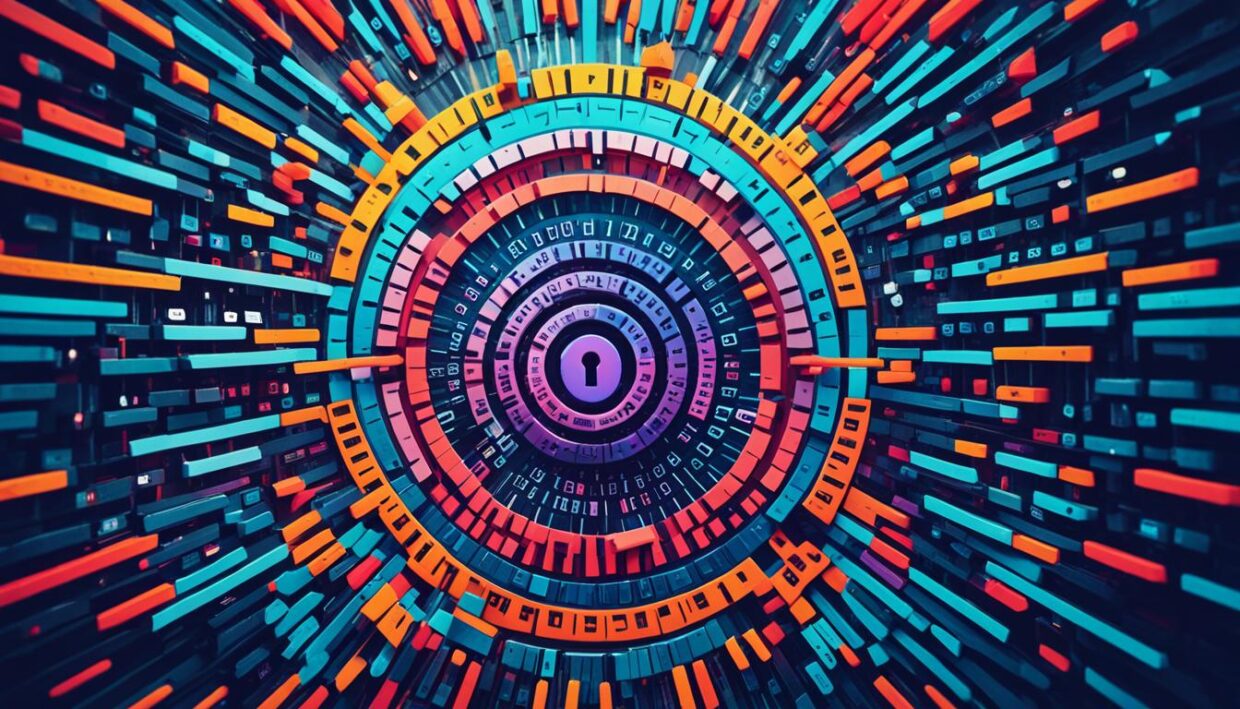
Regular Password Updates: A Proactive Approach
In the ever-evolving landscape of digital security, regular password updates have become a critical component of a proactive information security strategy. Cybercriminals are constantly devising new ways to breach accounts, and by consistently rotating your passwords, you can stay one step ahead of their tactics.
Studies show that 80% of all cybersecurity attacks involve a weak or stolen password. This startling statistic highlights the importance of creating unique, complex passwords for each of your accounts. Reusing the same password across multiple platforms increases the risk of a domino effect, where a single breach can compromise all your sensitive information.
Changing your passwords on a regular basis, even if no suspicious activity has been detected, can significantly reduce the window of opportunity for hackers. Regularly updating passwords prevents unauthorized access if they are saved on lost or changed devices, and it also mitigates the impact of potential data breaches that may have exposed your login credentials.
| Reason for Password Update | Frequency |
|---|---|
| Security breach or suspected unauthorized access | Immediately |
| Malware or phishing software discovered | Immediately |
| Shared accounts with changing ownership | Whenever there is a change in account ownership |
| Logging in from public places | After each public login session |
| Accounts not used for over a year | Annually |
By embracing a proactive approach to password updates and password rotation, you can stay ahead of the curve and safeguard your digital assets from unauthorized access. Remember, the key to robust security lies in your ability to constantly reinvent your passwords.

Embrace Two-Factor Authentication for Added Security
In today’s digital landscape, where data breaches and cyberattacks are on the rise, it’s crucial to fortify your information security with additional safeguards. One such essential measure is two-factor authentication (2FA), an extra layer of security that goes beyond just a password.
Two-factor authentication requires two forms of identification to access your accounts. Typically, this includes a password as the first factor, along with a second form of identification, such as a unique code sent to your smartphone or a physical security token. By enabling 2FA, you significantly reduce the risk of unauthorized access, even if your password is compromised.
- Password managers are recommended to generate unique passwords for each account, reducing the risk of stolen, reused, or weak passwords leading to data breaches.
- SMS text message 2FA is the least secure method due to vulnerabilities to SIM swap attacks, and authenticator apps are generally considered a more secure alternative.
- Banks often mandate 2FA for online banking to enhance security, and many websites offer the option to enable multi-factor authentication (MFA) in their security settings.
The recommendation is to enable 2FA on all personal accounts, especially those that hold valuable data or are used frequently. This “2FA All the Things” approach is a simple yet powerful way to fortify your online security and protect your sensitive information from potential breaches.
“Enabling two-factor authentication is the single most important thing you can do to improve the security of your online accounts.” – Alex Stamos, former Chief Security Officer at Facebook
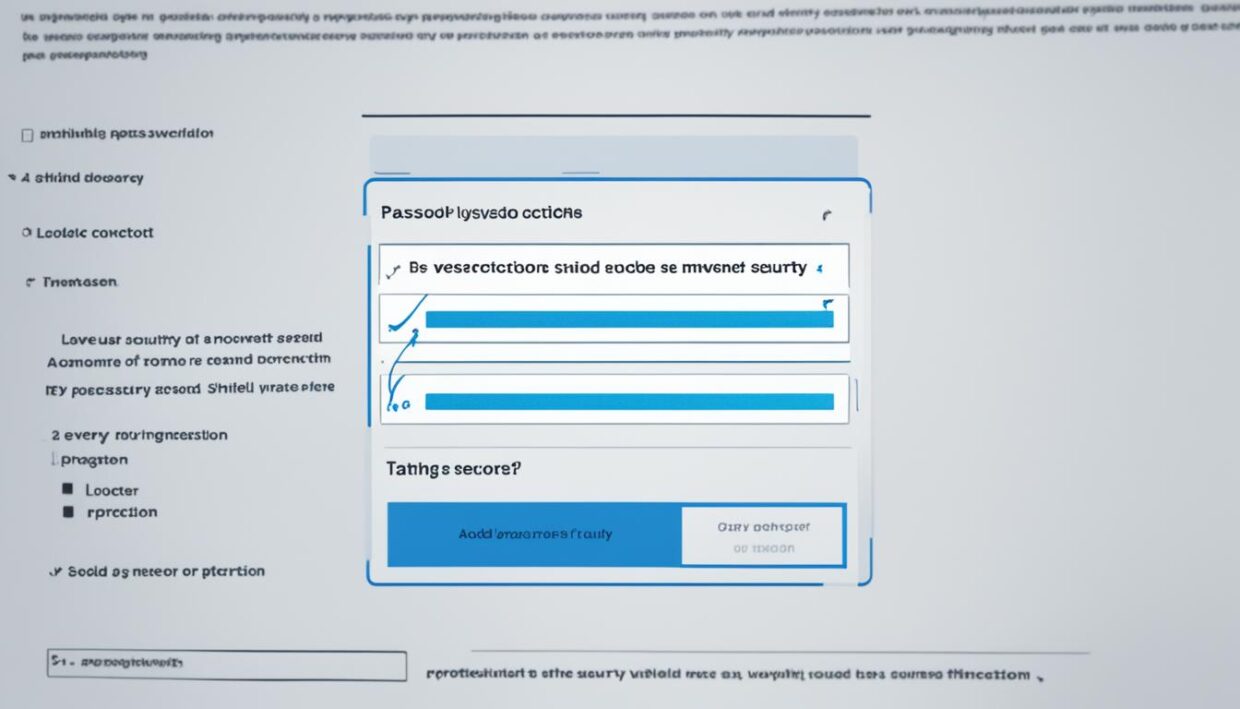
By embracing two-factor authentication, you can take a proactive stance in safeguarding your digital identity and sensitive data. It’s a small yet impactful step towards enhancing your overall information security and reducing the risks associated with compromised passwords.
Steps to Take When a Password is Compromised
In today’s digital landscape, the risk of password breaches and account compromises is a stark reality. When a password is suspected of being exposed, it’s crucial to act swiftly to mitigate the potential damage. The first and foremost step is to change the compromised password immediately, ensuring it is unique and complex, consisting of at least 8 characters with a combination of letters, numbers, and symbols.
However, the threat doesn’t stop there. If the same password has been used across multiple accounts, it’s essential to update them all to prevent further unauthorized access. This proactive approach can help safeguard your sensitive information and reduce the risk of identity theft.
Identify Breached Accounts with Have I Been Pwned
To identify any other accounts that may have been compromised, the Have I Been Pwned website is a valuable resource. This free service allows individuals to check if their personal information has been exposed in a data breach, providing a comprehensive overview of any breached accounts. By taking this step, you can quickly identify and address any other potential vulnerabilities, further strengthening your online security.
Being vigilant and closely monitoring account activity is crucial after a data breach occurs. It’s recommended to regularly review financial statements, credit reports, and online accounts for any suspicious activity. Additionally, consider freezing your credit with the three major credit bureaus (Equifax, Experian, and TransUnion) to prevent new credit accounts from being opened in your name.
A proactive approach to protecting personal data can help mitigate the risks and complications of identity theft. By taking immediate action, staying informed, and leveraging available resources, you can minimize the impact of a password breach and safeguard your digital identity.

Aligning with Information Security Standards like ISO 27001
Implementing robust information security practices is crucial for safeguarding sensitive data and maintaining the trust of customers and stakeholders. One way to ensure a comprehensive approach is by aligning with globally recognized information security standards, such as ISO 27001.
ISO 27001 is an international standard that provides a framework for establishing, implementing, maintaining, and continually improving an organization’s information security management system (ISMS). Nearly a fifth of all valid certifications to ISO/IEC 27001 are in the information technology sector, as per the ISO Survey 2021. Over 70,000 certificates were reported in 150 countries across various economic sectors, ranging from agriculture to social services, as per the ISO Survey 2022.
Access Control and Multi-Factor Authentication Requirements
A key aspect of ISO 27001 is its emphasis on access control. The standard mandates the use of strong, complex passwords and the implementation of multi-factor authentication (MFA) for sensitive systems and data. By requiring robust access control measures, ISO 27001 helps organizations mitigate the risks associated with compromised credentials and unauthorized access.
| Information Security Standard | Key Focus Areas |
|---|---|
| ISO/IEC 27001 |
|
| NIST Cybersecurity Framework |
|
| NIST SP 800-53 |
|
By aligning with ISO 27001 and implementing its access control and multi-factor authentication requirements, organizations can enhance their overall information security posture and demonstrate their commitment to protecting sensitive data.

User Awareness Training: Fortifying the Human Element
In the realm of information security, the human factor plays a critical role. While robust technical measures are essential, user awareness training emerges as a pivotal component in cultivating a strong cybersecurity culture. By empowering employees with the knowledge and skills to recognize and respond to security threats, organizations can significantly enhance their overall defense against cyber attacks.
Numerous studies have highlighted the importance of user awareness training. In fact, 91% of organizations use security awareness training to reduce cybersecurity risks related to user behavior, and 64% leverage it to directly influence employee conduct. Moreover, 61% of organizations employ such training to address regulatory requirements, while 55% do so to comply with internal policies.
The impact of user awareness training is measurable, with organizations reporting a median reduction of 50% in the annualized risk of phishing attacks after making incremental investments in this area. Furthermore, the median annual return on investment for security awareness training is approximately 5 times.
Effective user awareness training goes beyond simply imparting information. It involves simulated phishing attacks to educate employees on recognizing and avoiding such tactics, as well as regular incident response drills to ensure employees understand their roles during a security incident. Training programs should also focus on raising awareness about social engineering techniques to empower employees to be the first line of defense.
Fostering a culture of cybersecurity awareness requires a multi-faceted approach. Recognizing and rewarding employees who actively engage in training can contribute to a secure workplace culture, while leadership support and open communication channels for reporting security concerns are also crucial in establishing a proactive mindset.
By integrating user awareness training into a comprehensive information security strategy, organizations can fortify the human element and enhance their overall resilience against cyber threats. This holistic approach, encompassing both technical and human-centric measures, is essential in navigating the ever-evolving cybersecurity landscape.

Incident Management: Preparedness for Potential Breaches
In today’s digital landscape, even the most robust information security measures can be tested by sophisticated cyber threats. That’s why proactive incident management and breach preparedness are essential for organizations seeking to safeguard their valuable assets and protect their reputation. By aligning with industry standards like ISO 27001, businesses can ensure they have a comprehensive contingency planning framework in place to address potential security incidents.
The urgency of incident management planning has never been more apparent. Digital breaches in the United States rose to at least 3,200 in 2023 from 1,800 in 2022, impacting over 350 million individuals. Regulatory bodies, such as the EU General Data Protection Regulation and the California Consumer Protection Act, mandate timely breach notification, underscoring the need for robust incident response readiness.
- Develop a Cybersecurity Incident Response Plan (CSIRP): Align with industry best practices, such as those outlined by the National Institute of Standards and Technology (NIST), to establish a structured approach for preparing, detecting, containing, eradicating, and recovering from security incidents.
- Conduct Regular Risk Assessments: Identify potential vulnerabilities and threats to your organization, and implement proactive measures to mitigate risks and prevent incidents from occurring.
- Implement Malware Prevention Strategies: Deploy robust anti-malware solutions and maintain vigilant host security to safeguard against the growing threat of malicious software.
- Establish Notification Procedures: Clearly define the steps for communicating with relevant stakeholders, including law enforcement, customers, and regulatory authorities, in the event of a breach.
- Prioritize Containment and Recovery: Develop effective containment strategies to minimize the impact of an incident and ensure a timely and efficient recovery process.
Organizations that have well-formalized incident response plans have been reported to experience, on average, 55% lower costs and are 50% faster in containing incidents (IBM, 2020). By investing in proactive incident management and breach preparedness, businesses can enhance their resilience, protect their assets, and maintain the trust of their customers and stakeholders.
“The mean time to identify a data breach is 207 days, while the mean time to contain a data breach is 70 days (Source: “Cost of a Data Breach Report 2022,” IBM, 2022).”

The Comprehensive Approach to Information Security
In an era where cybersecurity threats are ever-evolving, a comprehensive information security strategy is essential for safeguarding an organization’s digital assets. While strong password security is a crucial component, it is just one part of a holistic cybersecurity approach. By aligning with industry standards like ISO 27001, businesses can adopt a multifaceted security framework that goes beyond password protection.
A comprehensive information security strategy encompasses various elements, including data privacy, access control, incident management, and user awareness training. This holistic approach ensures that organizations are equipped to address the diverse challenges posed by modern-day cyber threats. By implementing a layered security model, businesses can enhance their overall resilience and better protect themselves against the potentially devastating consequences of a data breach or cyber attack.
- Comprehensive IT security involves multiple layers of protection, including vulnerability scanning, dark web scanning, and backup monitoring.
- Regular vulnerability scanning helps in identifying potential weaknesses and flaws in network, systems, and applications.
- Dark web scanning provides insight into threats specifically targeting an organization and helps in early detection of potential breaches or data leaks.
- Backup monitoring ensures backups are up-to-date, reliable, and accessible, and testing restoration processes is crucial for effectiveness.
- Firmware management protects against vulnerabilities in devices, ensures performance improvements, and enhances compatibility between devices.
- Firewalls act as a protective barrier, enforce cybersecurity policies, and provide valuable insights into network security posture.
By adopting a comprehensive information security strategy, organizations can stay ahead of the curve, safeguarding their data, systems, and reputation in an increasingly complex digital landscape. This holistic approach, anchored in industry-leading standards and best practices, empowers businesses to build a robust and resilient cybersecurity posture that can withstand the challenges of the modern threat landscape.
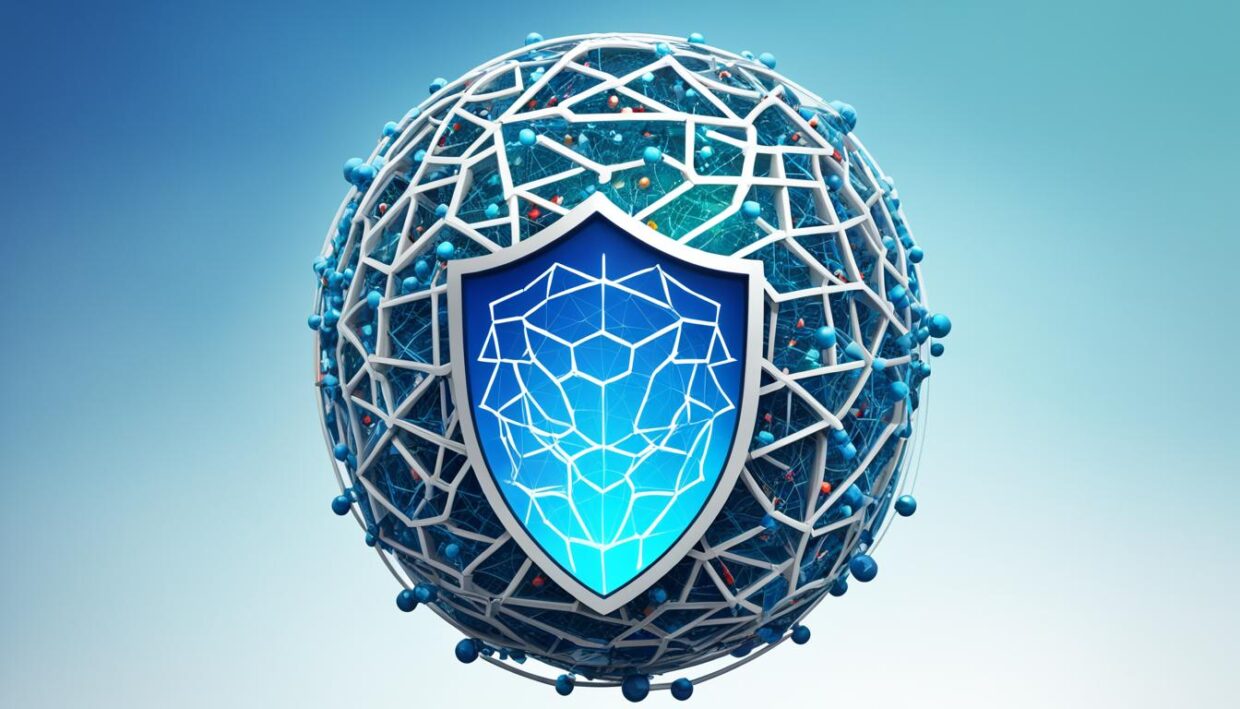
“Comprehensive cybersecurity is no longer a nice-to-have, but a must-have for businesses of all sizes. It’s the foundation upon which organizations can thrive in the digital age.”
Basic Cybersecurity Tips for the Workplace
In today’s digital landscape, workplace cybersecurity has become paramount. As employees handle sensitive data and assets on a daily basis, it’s crucial to implement fundamental security measures to safeguard against potential threats. Here are some essential tips to consider for device security and data protection in the workplace.
Physically and Virtually Secure Devices, Assets, and Data
Begin by securing your physical devices, such as laptops and smartphones. Always keep them locked when unattended, and avoid leaving them in public places. Additionally, ensure that your computer screens are positioned to prevent unauthorized viewing by others.
When it comes to virtual security, create unique and complex passwords for all your accounts, and consider using a password manager for secure storage. Avoid reusing the same passwords across multiple accounts, as this can leave you vulnerable to credential stuffing attacks.
Encrypt sensitive data stored on your devices, and enable two-factor authentication (2FA) for added security. Keep all software and applications up-to-date to safeguard against known vulnerabilities.
- Lock devices when unattended
- Use unique, complex passwords and a password manager
- Encrypt sensitive data
- Enable two-factor authentication
- Keep software and apps updated
By implementing these basic cybersecurity practices, you can create multiple layers of protection for your workplace devices, assets, and data, reducing the risk of potential breaches and safeguarding your organization’s valuable information.
Online Safety: Browsing, Email, and Transaction Security
In today’s digital age, online safety has become a critical concern. As the Internet has become more prevalent, criminal activity has increased, highlighting the need for heightened vigilance in web browsing, email management, and financial transactions. By employing a few essential strategies, you can safeguard your online activities and protect your personal information.
When it comes to web browsing, controlling physical access to your personal computer is crucial. Ensure that your device is secured with a strong password or biometric authentication. Additionally, create complex passphrases for your online accounts, avoiding the use of easily guessable information. Regularly update your operating system, applications, antivirus, and antispyware to mitigate security risks.
Email security is another vital aspect of online safety. Beware of phishing scams, where criminals attempt to lure you into revealing sensitive information. Avoid clicking on links or opening attachments from unfamiliar sources, as they may contain malicious content. Furthermore, log out properly from banking websites and clear your browser’s cache to prevent unauthorized access.
- Around 83% of cyber attacks are phishing attacks.
- An estimated 60% of email attachments contain malicious content.
- Roughly 80% of data breaches are due to weak passwords.
When conducting financial transactions online, exercise caution. Avoid using public computers or unsecured WiFi networks, as they can expose your sensitive information. If you notice any suspicious activity on your accounts, immediately contact your financial institutions. By staying vigilant and following best practices, you can significantly enhance your online safety and protect your digital footprint.
| Statistic | Value |
|---|---|
| Percentage of cyber attacks that are phishing attacks | 83% |
| Percentage of email attachments that contain malicious content | 60% |
| Percentage of data breaches due to weak passwords | 80% |

Remember, the key to maintaining online safety lies in a proactive, multi-layered approach. By implementing strong password practices, being cautious with emails and financial transactions, and regularly updating your security measures, you can significantly reduce the risk of falling victim to cyber threats and safeguard your digital well-being.
Social Media Best Practices for Enhanced Security
As the digital landscape continues to evolve, maintaining robust social media security and personal information protection has become increasingly crucial. With the growing number of active social media users reaching 5.07 billion as of April 2024, it’s essential to be mindful of how our online activities can impact our online reputation management.
One of the primary concerns when it comes to social media security is the potential for data breaches and unauthorized access to personal information. Meta Platforms reported that the login details of one million Facebook users were stolen in 2022 due to security issues in applications downloaded from Alphabet Inc. and Apple Inc.’s app stores. To mitigate such risks, it’s crucial to implement strong password policies, enable two-factor authentication, and regularly review and update privacy settings across all social media platforms.
Maintaining a vigilant approach to managing social media accounts is also essential. Brands should limit access rights to social media profiles to authorized staff only, granting administrator rights to employees who require access for their job responsibilities. Monitoring social media account activity and responding promptly to any security or unauthorized access issues is crucial to safeguarding personal and professional reputations.
Regular training and updates on security risks for employees can help avoid security breaches and aid in identifying and reacting to potential threats. By engaging in ongoing security and privacy training, utilizing reliable sources for best practices, and adhering to industry standards, organizations can fortify their defenses against cybersecurity threats.
Ultimately, social media best practices for enhanced security require a multi-faceted approach that combines robust technical measures, comprehensive user awareness, and proactive incident management. By prioritizing these key elements, individuals and organizations can navigate the digital landscape with confidence, protecting their personal information and online reputation.
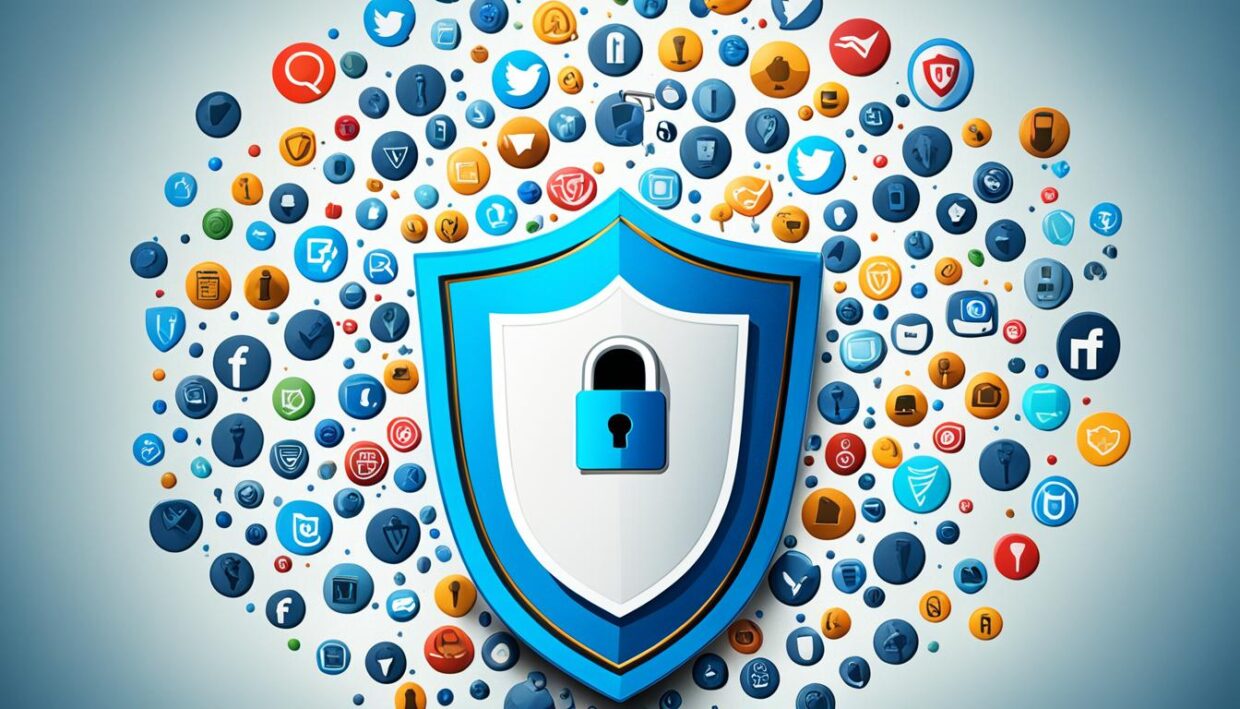
“Losses reported to the FTC originating from social media scams grew from $237 million in 2020 to $1.4 billion in 2023, underscoring the critical need for heightened security measures.”
As the number of active social media users continues to rise, the importance of social media security and personal information protection cannot be overstated. By adopting best practices and staying vigilant, individuals and organizations can navigate the digital landscape with confidence and safeguard their online reputation.
Remote Workforce Cybersecurity Considerations
As remote work continues to grow, employers must address the unique cybersecurity challenges faced by their remote workforce. One of the key priorities is providing specialized training to remote employees on best practices for maintaining information security and protecting sensitive data.
Specialized Training and Mobile Device Management
Remote workers often use personal devices or access company resources from unsecured home networks, increasing the risk of data breaches and cyber threats. To mitigate these risks, organizations should implement robust mobile device management (MDM) solutions that enable them to securely configure, monitor, and control access to corporate data on both company-issued and employee-owned devices.
In addition to MDM, comprehensive training programs that cover topics like password security, phishing awareness, and secure remote access protocols are essential. By empowering remote employees with the knowledge and tools to recognize and prevent cybersecurity incidents, organizations can bolster the resilience of their remote workforce.
| Cybersecurity Risks for Remote Workers | Percentage of Incidents |
|---|---|
| Use of public Wi-Fi networks | 62% |
| Phishing scams | 55% |
| Employee negligence | 46% |
| Use of personal unmanaged devices | 38% |
| Outdated software vulnerabilities | 31% |
By proactively addressing these remote work cybersecurity challenges through specialized training and mobile device management, organizations can empower their remote workforce to work securely and mitigate the risks associated with the mobile device security of a distributed team.

“Cybersecurity must be a top priority for organizations with remote workers, as the risks of data breaches and cyber threats are significantly heightened in a distributed work environment.”
Cybersecurity for Small Businesses and Startups
Small businesses and startups often face a daunting challenge when it comes to safeguarding their digital assets. While larger enterprises have the resources to invest heavily in robust cybersecurity measures, smaller organizations can be seen as easy targets by cybercriminals. However, ignoring information security can prove to be a fatal mistake – statistics show that around 60% of small businesses shut down within 6 months due to data breaches or cyber-attacks.
The average global breach cost is around $3.62 million, and for small businesses, 95% of incidents can cost up to $653,587 each. In 2021, intrusion attempts increased by 11% to 5.3 trillion, while cryptojacking incidents rose by 19% to 97.1 million and ransomware attacks surged by 105% to 623.3 million. Phishing and denial-of-service attacks were the most common attack vectors, impacting over 45% of small businesses, and 28% of small businesses were victims of data breaches.
Cybersecurity is not just an IT team’s responsibility – it requires a comprehensive, organization-wide approach. Unfortunately, many small businesses and startups fall into the trap of thinking that the IT team alone is responsible for security. This misconception can have devastating consequences, as 50% of Azure Active Directory global administrators do not use multi-factor authentication (MFA), leaving their systems vulnerable.
To combat these threats, small businesses and startups must prioritize proactive cybersecurity measures. This includes regularly updating software, implementing robust access controls, and training employees on best practices for online safety and incident response. By taking a proactive approach, small businesses and startups can significantly reduce their risk of falling victim to cyber-attacks and safeguard their operations.
| Cybersecurity Threat | Statistics |
|---|---|
| Small businesses shutting down within 6 months due to data breaches or cyber-attacks | Around 60% |
| Average global breach cost | $3.62 million |
| Small business incident cost (95% of cases) | Up to $653,587 |
| Increase in intrusion attempts in 2021 | 11% to 5.3 trillion |
| Increase in cryptojacking incidents in 2021 | 19% to 97.1 million |
| Increase in ransomware attacks in 2021 | 105% to 623.3 million |
| Small businesses impacted by phishing and denial-of-service attacks | Over 45% |
| Small businesses that were victims of data breaches | 28% |
By understanding the gravity of the small business cybersecurity and startup cybersecurity challenges, SMEs can take proactive steps to strengthen their information security and protect their operations from the escalating cyber threats. With the right strategies and tools, small businesses and startups can overcome the odds and safeguard their future.

Considerations for CEOs and CISOs
As the cybersecurity landscape continues to evolve, the roles of the CEO (Chief Executive Officer) and CISO (Chief Information Security Officer) have become increasingly crucial in safeguarding an organization’s digital assets. CEOs must ensure that both their CIO (Chief Information Officer) and CISO are appropriately resourced, with the CIO focusing on daily IT services to maintain competitiveness, while the CISO ensures secure operations to stay competitive today and in the future.
The CISO should possess a breadth of knowledge across various domains, such as security architecture, network engineering, and risk governance, gained through years of experience to manage systemic risks effectively. A strong security program must not be marginalized but integrated across all departments, with the CISO visible to all employees, fostering a culture of security awareness and collaboration.
The value of a security program is directly linked to the level of support it receives from the CEO. Hiring a CISO is just the beginning; continuous strategic support and adequate resourcing are essential for success. Security is a culture issue, and the CISO acts as a change agent, requiring public support from the CEO. Creating a charter and policies endorsed by executive leadership is crucial for driving cultural change towards better security practices.
Cybersecurity is a continuous life cycle, requiring regular assessment, scanning, remediation, and monitoring as the organization evolves. It is not a one-time endeavor, but an ongoing process that necessitates ongoing collaboration between the CEO and CISO. Cybersecurity demands discipline in adhering to best practices consistently; getting the basics right is crucial to building a solid security foundation within the organization.
Unfortunately, only 30% of CISOs feel they receive sufficient support from their CEO, and Gartner predicts nearly half of cybersecurity leaders will change jobs by 2025 due to multiple work-related stressors. The vast majority of CISOs report to the CIO rather than the CEO, which can create challenges in aligning security priorities with the organization’s overall strategic objectives.
As data increased more than 25% in a typical organization in 2022, with data from software-as-a-service applications growing by 236%, the importance of CEO cybersecurity responsibility and the CISO’s role in executive-level information security cannot be overstated.

“Cybersecurity is not just an IT issue, it’s a business issue. CEOs and CISOs must work together to ensure the organization is resilient and secure.”
Conclusion
The information security best practices and cybersecurity strategies outlined in this article underscore the critical importance of a comprehensive approach to data protection. By implementing robust password security, leveraging password managers, and embracing two-factor authentication, individuals and organizations can significantly enhance the overall security of their personal and business-sensitive information.
Aligning with industry standards like ISO 27001, conducting user awareness training, and establishing effective incident management procedures are crucial steps in fortifying the human element of cybersecurity. Additionally, addressing the diverse aspects of information security, from workplace practices to remote workforce considerations, can help mitigate the evolving cyber threats faced by businesses of all sizes.
As public awareness of cybersecurity continues to grow and the demand for skilled professionals increases, organizations must prioritize information security as a strategic imperative. By embracing these information security best practices and cybersecurity strategies, individuals and businesses can better protect their data, safeguard their reputation, and navigate the digital landscape with confidence.


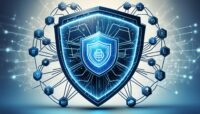
















Be the first to leave a comment